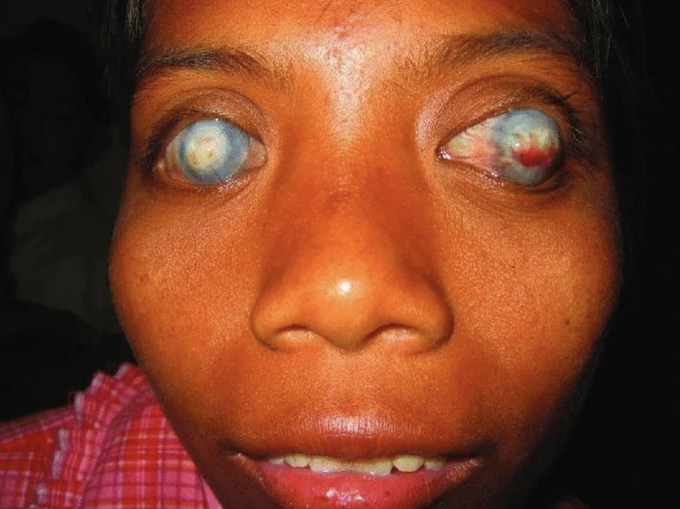


Measles
21-year-old male with bilateral severe corneal opacity related to measles infection. His vision bilaterally has no light perception. Measles is primarily caused by the measles virus, a member of the paramyxovirus family. It spreads through respiratory droplets, making close personal contact a common mode of transmission. The virus can survive in the air or on surfaces for a considerable time, contributing to its contagious nature. Symptoms: The onset of measles is marked by symptoms resembling a severe cold—fever, cough, and runny nose. Distinctive signs include tiny white spots on the inner cheeks, known as Koplik's spots. A characteristic red, blotchy rash typically appears a few days later, starting on the face and gradually spreading across the body. Complications: While most individuals recover fully from measles, complications can arise, especially in vulnerable populations. One severe consequence is corneal opacity, which can lead to blindness. The virus can affect the cornea, the transparent front part of the eye, causing cloudiness and visual impairment. Treatment: No specific antiviral treatment exists for measles, making supportive care crucial. Rest, hydration, and fever-reducing medications can alleviate symptoms. In severe cases, complications may necessitate hospitalization and specialized care. Prevention: Vaccination stands as the most effective means of preventing measles. The measles, mumps, and rubella (MMR) vaccine provides immunity against the virus. Administered in two doses, the vaccine is highly effective, protecting not only individuals but also contributing to community immunity and preventing outbreaks. Public health initiatives promoting widespread vaccination have significantly reduced measles-related morbidity and mortality globally. However, vaccine hesitancy remains a challenge in some regions, emphasizing the importance of education and awareness campaigns. Case credit: Causes of blindness in rural Myanmar (Burma): Mount Popa Taung-Kalat Blindness Prevention Project; July 2009, Clinical Ophthalmology 2009(default) DOI:10.2147/OPTH.S5295

